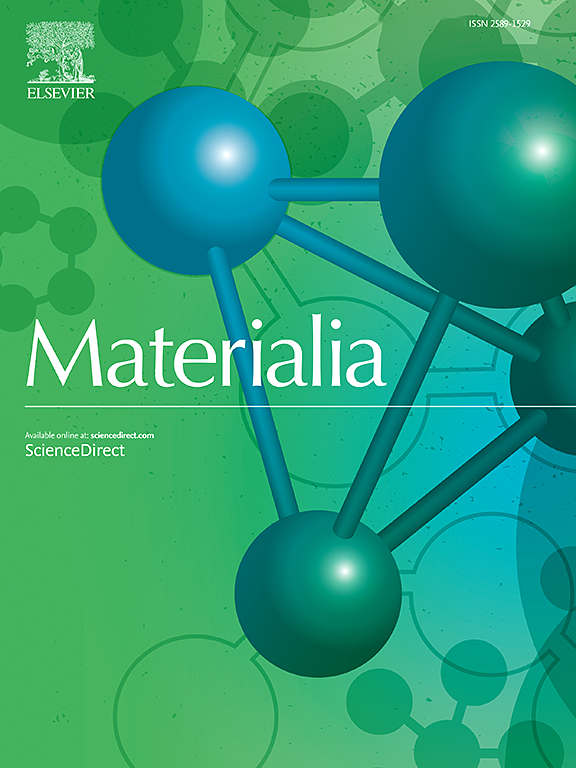Impact of friction stir welding-like heat cycles on precipitates in AA7050 analysed by SAXS and numerical modelling
IF 3
Q2 MATERIALS SCIENCE, MULTIDISCIPLINARY
引用次数: 0
Abstract
Precipitation kinetics in AA7050 during heat cycles as they occur in friction stir welding (FSW) were studied via small-angle X-ray scattering (SAXS), X-ray diffraction (XRD) and numerical modelling using the PanPrecipitation software. Reversion experiments were conducted for the calibration of the used model and the reversion stages of dissolution, growth and coarsening of precipitates are successfully modelled. Additionally, reversion experiments on an AA7108 alloy from literature data were modelled, affirming that other AA7xxx alloys can be described with the developed model as well. The model was used to predict precipitation kinetics in AA7050-T7451 during heat cycles typically occurring in FSW, enabling the prediction of the evolution of volume fraction and precipitate size distribution of -precipitates at elevated temperatures, matching experimental results. For instance, with increasing temperature, stronger coarsening as well as lower final volume fractions are expected. Finally, the influence of maximum temperature and welding speed on the precipitate size distribution was studied, providing guidelines for temperature-driven process design.

采用SAXS和数值模拟分析了搅拌摩擦焊样热循环对AA7050中析出相的影响
采用小角x射线散射(SAXS)、x射线衍射(XRD)和PanPrecipitation软件进行数值模拟,研究了搅拌摩擦焊(FSW)热循环过程中AA7050的析出动力学。通过还原实验对模型进行了校正,成功地模拟了析出相的溶解、生长和粗化的还原阶段。此外,对文献数据中的一种AA7108合金进行了还原实验,证实了所建立的模型也可以用于描述其他AA7xxx合金。利用该模型预测了AA7050-T7451在FSW热循环过程中的析出动力学,能够预测高温下η相体积分数的演变和析出相尺寸分布,与实验结果相吻合。例如,随着温度的升高,粗化程度会更强,最终体积分数会更低。最后,研究了最高温度和焊接速度对析出相尺寸分布的影响,为温度驱动工艺设计提供了指导。
本文章由计算机程序翻译,如有差异,请以英文原文为准。
求助全文
约1分钟内获得全文
求助全文
来源期刊

Materialia
MATERIALS SCIENCE, MULTIDISCIPLINARY-
CiteScore
6.40
自引率
2.90%
发文量
345
审稿时长
36 days
期刊介绍:
Materialia is a multidisciplinary journal of materials science and engineering that publishes original peer-reviewed research articles. Articles in Materialia advance the understanding of the relationship between processing, structure, property, and function of materials.
Materialia publishes full-length research articles, review articles, and letters (short communications). In addition to receiving direct submissions, Materialia also accepts transfers from Acta Materialia, Inc. partner journals. Materialia offers authors the choice to publish on an open access model (with author fee), or on a subscription model (with no author fee).
 求助内容:
求助内容: 应助结果提醒方式:
应助结果提醒方式:


